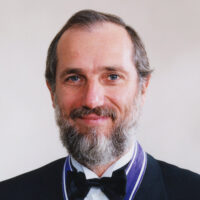
1990 Kyoto Prize Laureates
Arts(Painting, Sculpture, Craft, Architecture, Photography, Design, etc.)
/ Architect
1937 -
Architecture in My Experience As a Frontier Between Art and Science
1990
10 /24 Wed
Place:Kyoto International Conference Center
Culture, City, and Architecture
1990
10 /25 Thu
13:20 - 17:30
Place:Kyoto International Conference Center
An architect, who of all his contemporaries, continues to create the most remarkable architectural works, suggesting the direction of future architecture. As one of the leaders of modern high-tech architecture, he sought to express architectures by means of highly industrialized materials. In an era of confusion of various architectural concepts, he consistently combined architectural styles with developing technology to achieve higher levels of humanistic expression and cleared the path for new architectural possibilities, which appeared in many masterpieces, including the Pompidou Centre in Paris.
*This category then was Category of Creative Arts and Moral Sciences.
*This field then was Field of Arts (Painting, Sculpture, Architecture).
While Mr. Renzo Piano’s architecture lies on an extension of the analysis of functionalism and functional expression of modern architecture, it successfully departs from the classic holistic expression. In this manner, he cleared the path for new architectural possibilities as we proceed from the 20th to the 21st century.
Mr. Piano is one of the leaders of modern high-tech architecture. The distinctiveness of his architectural style lies not in purely logical and mechanical expression, but in that of raising technology to an allegoric and aesthetically impressive form.
It is commonly held that the origin of “modern” architecture can be traced to the period of 1920 to 1930. However, the architectural concepts established at that time did not begin to be employed in construction practice until the 1950 to 1960 period. Mr. Piano belongs to the generation which appeared after this age of “modern” architecture. In an era of confusion of various architectural concepts, he consistently combined architectural styles with developing technology to achieve higher levels of humanistic expression.
The word “architecture” is made up of the combination of “archi” and “techne.” The word “techne” has been changed to “technique” and then to “technology,” which is the term used today. Mr. Piano has researched the root of the term “technology,” and consequently has started rethinking the relationship between “technology” and “architecture” resulting in his theory that the two disciplines must be molded together. As an architect, he developed his thinking by examining the root of the Italian traditional word “techne” and its meaning which has continued from the time of the Renaissance. His work includes maximum architectural variability and suggests the direction of future architecture.
Mr. Piano is well known for his designs of the Pompidou Culture Centre in Paris, the IBM Traveling Pavilion, and the Menil Collection Museum in Houston, Texas. In addition, he has earned a reputation for the design of several local revitalization projects in which he focused on the harmony between nature and the cultural environment where they are located.
Among contemporary architects, his architecture has made a clear footprint on the history of architecture in the last half of the 20th century. Mr. Piano continues to create the most remarkable architectural work which is also said to be the most humane. Mr. Renzo Piano is a most suitable laureate for the 1990 Kyoto Prize in Creative Arts and Moral Sciences.
Profile is at the time of the award.